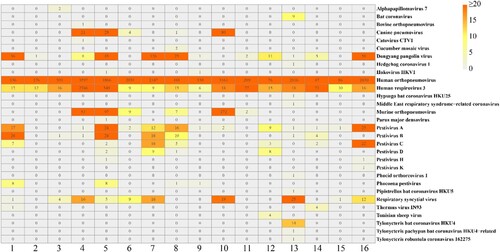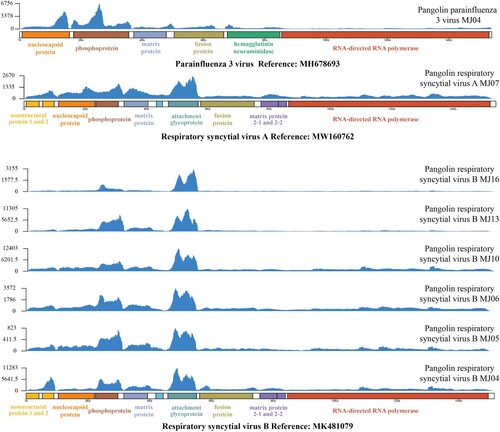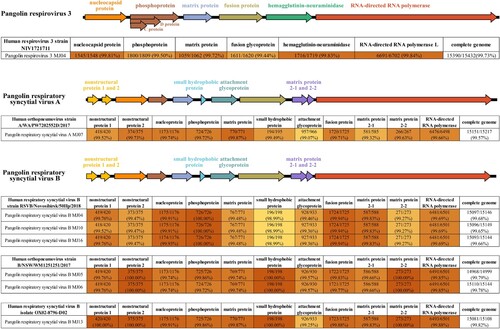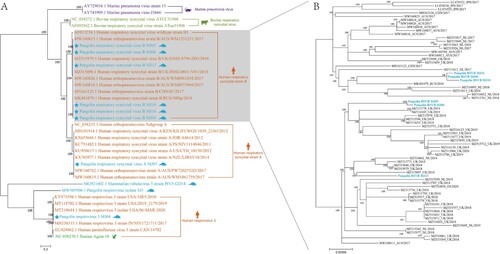Figures & data
Table 1. General information of the rescued Malayan pangolins.
Figure 1. Overview and abundance of viral species in pangolin lung tissue samples. The darkest colour represents more than 20 reads.

Figure 2. High-throughput sequencing coverage plots for eight strains of virus detected in pangolin lung tissue samples.

Supplemental Material
Download MS Word (1.4 MB)Data availability statement
The sequences for this study are available in GenBank under the accession number OM141135-OM141143. The raw data of this study have been deposited in the NGDC (National Genomics Data Center) database with accessions CRA006942.
Acknowledgements
This work was financially supported by a project from Ministry of Science and Technology of China (No. 2020YFC0840805), a start-up funding for Dr. Yi-Gang Tong from Beijing Advanced Innovation Center for Soft Matter Science and Engineering, Guangxi Scientific and Technological Research (GUIKEAB20059002) and Guangxi Medical University Training Program for Distinguished Young Scholars.


